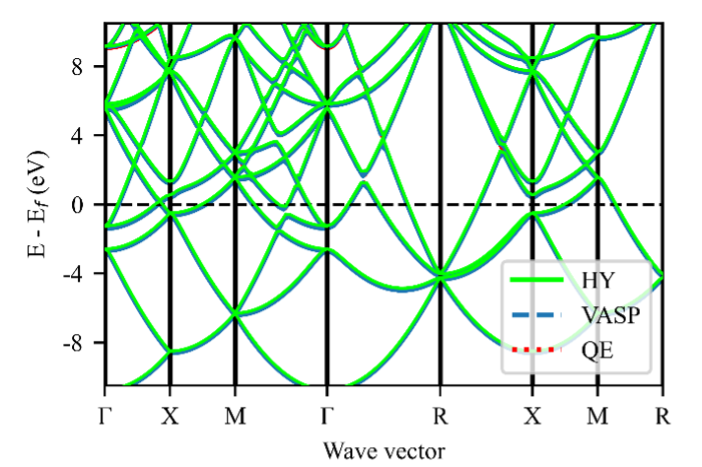Recently, the research group led by Jiaxin Zheng at Peking University’s School of Advanced Materials, in collaboration with Shenzhen Eacomp Technology, successfully developed Hylanemos, a density functional theory (DFT) computational software with fully independent intellectual property rights, based on the high-performance Julia programming language. This achievement ensures complete autonomy and control from algorithms to code, eliminating dependence on foreign software and establishing a secure foundation for foundational innovation in critical fields such as new materials and renewable energy. As the first domestically developed DFT software to reach engineering application standards, Hylanemos represents not only a replacement for existing technical tools but also a historic leap for China in computational materials science, transitioning from “follow and imitation” to “independent innovation.” This breakthrough holds significant importance for promoting high-quality industrial development, fostering new productive forces, and advancing new industrialization. The related research, titled “Hylanemos: An Integrated Solution for Materials Simulations Based on Kohn-Sham DFT,” was published in the top-tier journal Science China Technological Sciences (CAS Q1).
DFT computational software is a core tool in materials science, chemistry, and physics, enabling theoretical simulations to reveal materials’ electronic structures, energy states, and physicochemical properties. This approach avoids extensive trial-and-error experiments, enhances research & development efficiency, and shortens the development cycle for new materials. However, China has long relied on foreign software such as VASP and Quantum Espresso (QE), facing risks of technological restrictions, high licensing fees, and complex operational barriers, which have significantly constrained domestic research innovation and industrial security.
The Hylanemos computational software developed by the research team has achieved significant progress and breakthroughs in its underlying architecture, computational performance, and functional modules, specifically in the following three aspects:
1. Underlying Architecture Innovation
Through a decoupled layered architecture, the software achieves an optimized hierarchical workflow for computational tasks. Each layer interacts via standardized interfaces, eliminating the redundant design of traditional software that relies on state transitions to implement complex algorithms, thereby significantly improving the efficiency of new algorithm development. The software natively supports various types of computations without relying on third-party libraries such as VTST or VaspSol, greatly reducing deployment complexity.

Figure 1. The Layered Program Framework Design of Hylanemos
2. Computational Performance Leadership.
Hylanemos fully leverages the advantageous features of the Julia language. In tests with LiCoO2 systems containing 48/96 atoms, it demonstrated superior computational speed compared to VASP and QE. Even in larger systems with 300 atoms, it still maintained excellent performance. This validates the software's high parallel computing capability. Additionally, the self-developed ultra-soft pseudopotentials (Eacomp PP) reduced the cutoff energy for lithium battery cathode material calculations from 24 Ha to 18 Ha, which cut the computational workload by 30% while maintaining accuracy.

Figure 2. Performance Comparison Test of Hylanemos
3. Dual Drive of Precision and Functionality.
Through cross-platform comparison with mainstream software like VASP and QE, Hylanemos has demonstrated comparable accuracy in common properties such as band structure, phonon spectrum, and migration energy barrier. Moreover, Hylanemos holds significant advantages in continuous functionality development and precision assurance. In the future, through algorithmic innovation and module expansion, it will further enhance its functional coverage, computational stability, and precision.



Figure 3. Demonstration of Reliable High-Precision Performance Across Multiple Properties by Hylanemos
As an innovative representative of domestic DFT computation software, Hylanemos will continue to fulfill its mission of “riding the wave of the times, meeting national needs, and answering the expectations of industry.” It makes continuous breakthroughs in four main areas: technological depth, open sharing, ecosystem co-construction, and industrial empowerment. The software is committed to building a globally competitive computational materials science ecosystem. This platform aims to become the "digital bridge" connecting academia and industry, drive China's transformation from “experiment-driven trial and error” to “computation-driven innovation,” promote collaborative synergy in the future industry of “AI+,” establish a “Chinese solution” in the global new materials revolution, and provide core algorithmic support for breakthroughs in energy technologies and high-end manufacturing upgrades under the “dual carbon” goals.
The authors of this article are Associate Professor Jiaxin Zheng from the School of Advanced Materials and core algorithm engineers Jianshu Jie and Ming Xu from Shenzhen Eacomp Technology. Jianshu Jie from Shenzhen Eacomp Technology is the first author. This research was supported by the National Natural Science Foundation of China’s Mathematical Tianyuan Key Project and the Peking University Shenzhen Graduate School-Eacomp Technology Battery Material Simulation Joint Laboratory.
